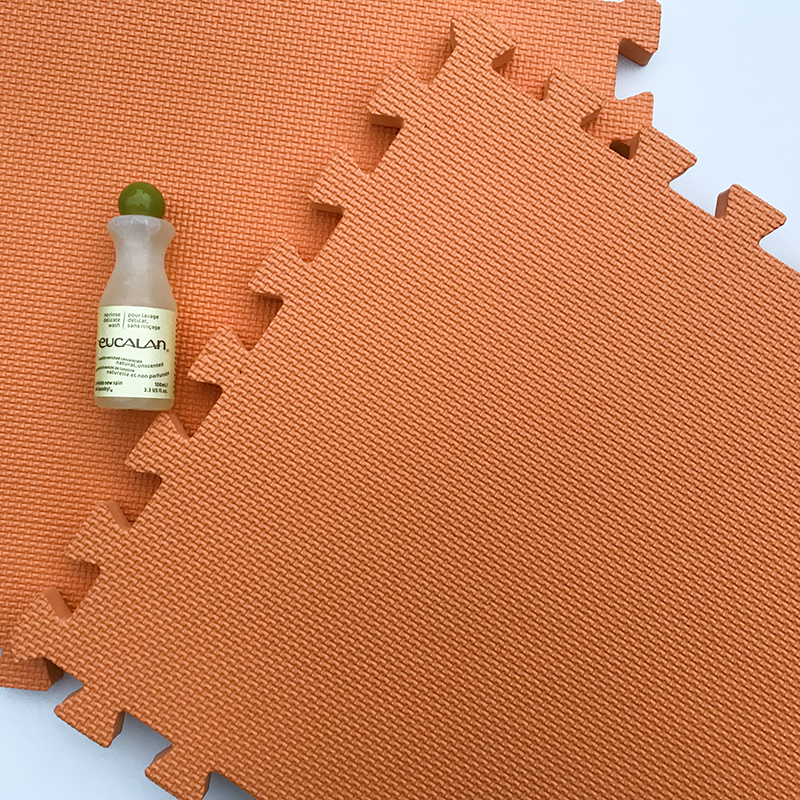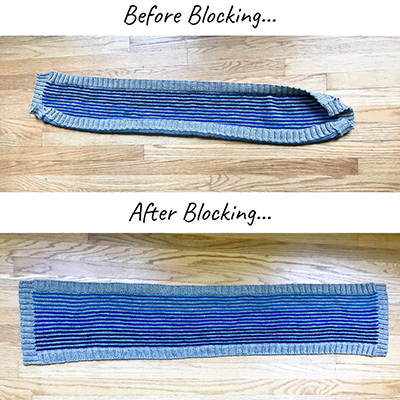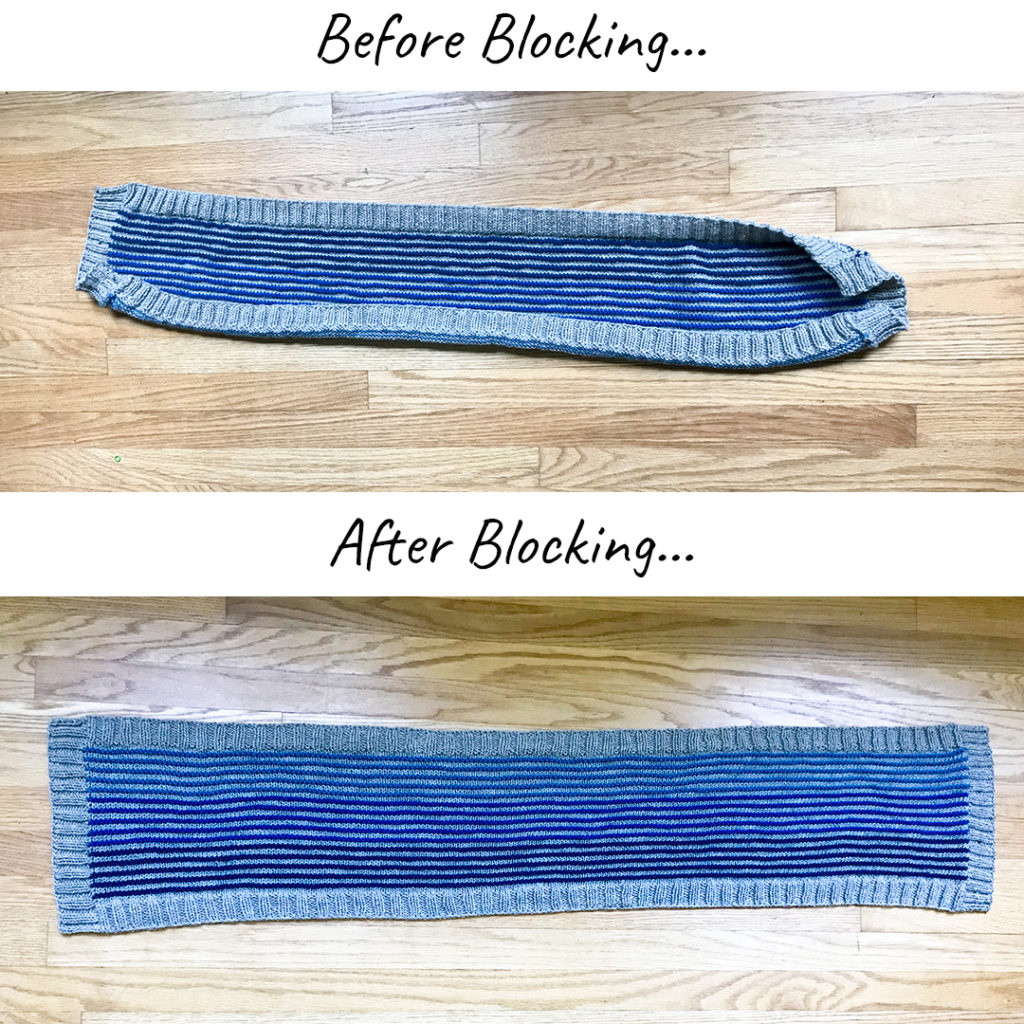I’m a big fan of wet-blocking. It gives your finished knitted piece a more finished look to it. And it can help even out your stitches and help to flatten out edges for a professional look. Want to see the magic of blocking?
This is my On the Horizon buttoned cowl. It features a 2×2 Rib stitch pattern on all ends, and before blocking these ends were all curling in (which is not unusual at all). A good blocking evens everything out, relaxing the stitches so that they lay more flat.
Here are the steps I took:
- I wet block this piece, meaning that I soaked it in water (and a little wool wash) for about 15 minutes in a basin.
- Before taking the piece completely out of the basin I tried to get as much water out of it as possible (this is key!). One technique I use to do this is to press the piece up against the side of the basin as I’m taking it out. And keep pressing – the more water you get out the better.
- Then clump the piece together and put it on a bunch of towels. Roll it in the towels and press it – again, the goal being to get as much water out as possible. The piece should feel damp before you put it on your blocking tiles (not sopping wet).
Note: I prefer the thicker blocking mat/tiles (see picture below) – the kind I use are no longer available but these are pretty similar. For wool wash, I typically use Eucalan – it’s rinse-free and gentle to use on all your hand-knits.
- Place the piece on blocking tiles and gently start to shape it to the dimensions noted in the pattern (or your desired dimensions) and pin it in place.
- Wait for it to dry! Aiming a fan directly at the piece can help speed things up, if you’re on a deadline 🙂
I can’t stress enough the importance of getting as much water out of the piece as possible before you lay it out on blocking tiles.
Another tip – if you are a bit hesitant to dive right into wet blocking, try using a squirt bottle. This is also a great technique if there is only one part of your piece that really needs a blocking. Lay your piece out on blocking tiles and spray it with water (you can purchase empty spray bottles at a hardware store or anywhere you get cleaning supplies) – this let’s you control things a bit more and can get you more comfortable with wet blocking without submerging the entire piece in water.



